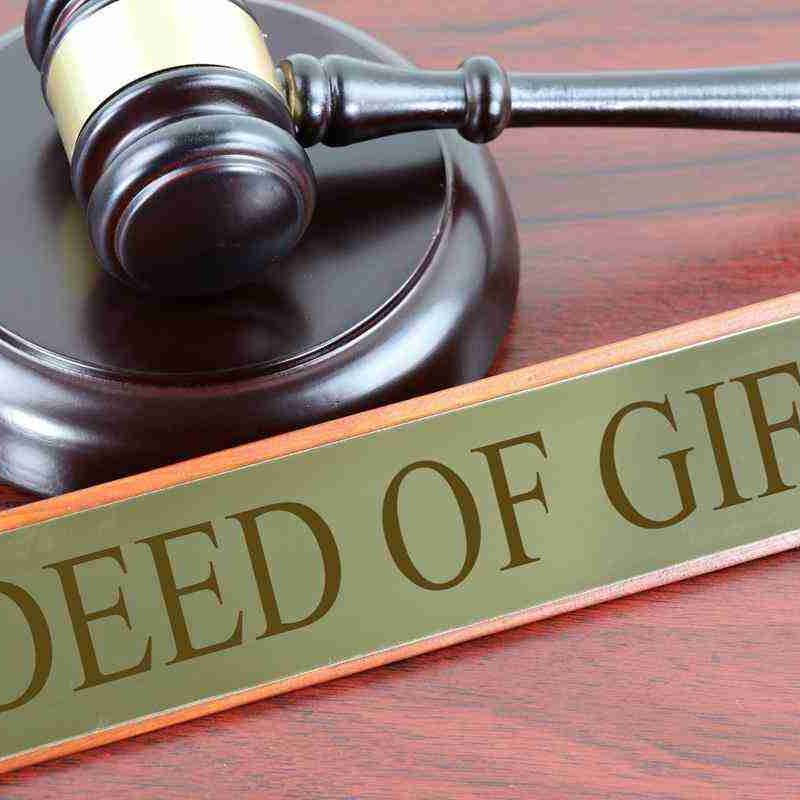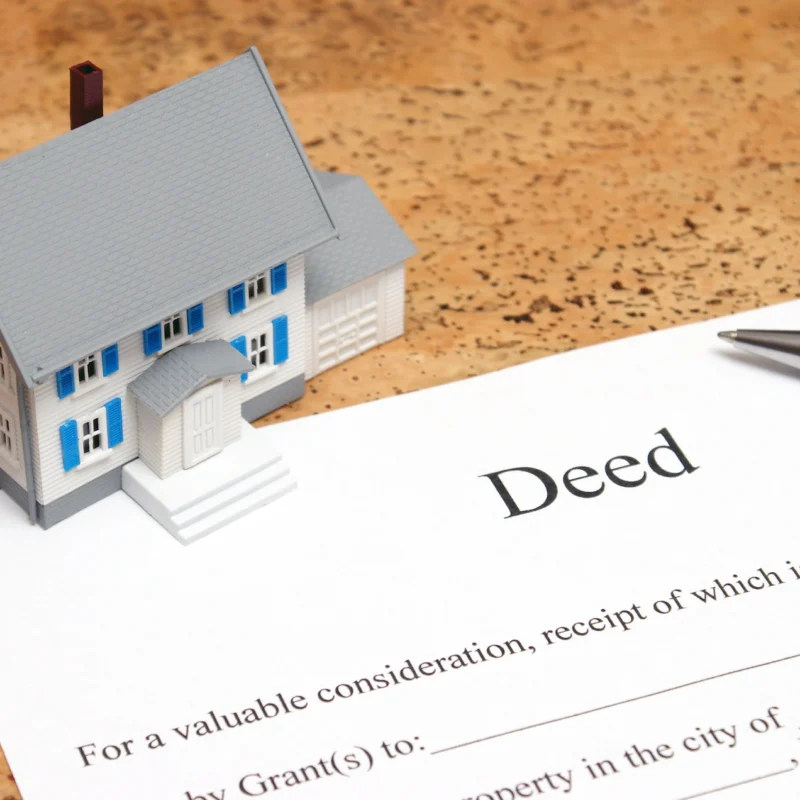MyLawPoint for property document verification was 100% worth it. Initially, I hired a lawyer for bank loan document processing but was disappointed with their professionalism. MyLawPoint connected me with an expert advocate who articulated all possible pitfalls in purchasing the property (DC Survey 66/1 Chikkanagamangala) from Reliaable Developer. Their detailed legal report helped me avoid a potential loss of 80 lakhs. I'm grateful for MyLawPoint's excellent coordination and swift document collection. Thank you to their team for saving me from a risky investment.
Relinquishment Deed
Basic Price
₹11,999.00 ₹6,499.00
Relinquishment Deed
In the absence of a will, known as intestacy, a relinquishment deed facilitates the smooth transfer of inherited property when there are multiple legal heirs involved.
A relinquishment deed enables a legal heir to renounce their entitlement to inherited property in favor of other heirs. In cases of intestacy, this deed serves as the legal instrument for transferring ownership. The legal heir(s) inheriting the property relinquish their shares in favor of the co-owner(s) through this deed. Whether assigned for a consideration or without, it’s imperative that the parties signing the deed are co-owners and legal heirs of the property for the transfer to be effective.
Elements of a Relinquishment Deed
- Property Title Description: Detailed description of the property title being relinquished.
- Details of the Executant And Releasor: Comprehensive information about the individual executing and releasing the relinquished rights.
- Releasee Information: Full particulars of the releasee, including name, father’s/husband’s name, address, etc., who will receive the relinquished titles/rights/shares.
- Property Details: In-depth information about the property, including address, registration details, survey number, and Sub-registrar office details.
- Purpose: Clear statement of the prime purpose of the relinquishment deed, especially in cases of intestacy where the absolute owner has passed away without leaving a will.
- Heir Particulars: Identification of all current heirs to the property, preferably presented in a tabular format with details such as age, address, relationship to the deceased owner, etc.
- Share Particulars: Specification of the proportionate shares held by each heir according to the applicable Succession Act in the absence of a will.
- Relinquishment Clause: The most crucial aspect of the deed, where the releasors/executants renounce their shares in the property in favor of the releasee, typically without any monetary consideration and out of natural love and affection.
- Authorized Signatures: Signatures of all involved parties, including releasees and executants, must be present. Additionally, the document must be attested by two witnesses before being registered at the designated Sub-registrar office.

I purchased a flat in Hyderabad, but the builder delayed possession beyond the committed date. This caused significant financial strain as I was paying high EMIs and rent, leaving me with no money at month-end. Feeling stressed and helpless, I discovered MyLawPoint. Their Property Expert Lawyer suggested sending a legal notice to the builder and appealing to RERA for the delayed possession. Thanks to their guidance, I received compensation from the builder for the delay and finally gained possession of my flat. MyLawPoint's support was invaluable in resolving this effectively.
Malani

I had an exceptional experience with MyLawPoint. Their support throughout the entire process, from Property Paper Verification to the Sale Deed Registration, was truly comprehensive and invaluable. The level of service they provided exceeded my expectations, and I am highly satisfied with the outcome. Their dedication to keeping me informed with timely updates at every step of the way further showcased their professionalism and commitment to client satisfaction. I wholeheartedly recommend MyLawPoint to anyone in need of legal support for their property transactions.
Gerald Gilbert
Explore our other property services
Related products
Frequently Asked Question
No, stamp duty is not included in MyLawPoint's fee. It should be paid separately, and our lawyers will assist you in procuring it.
The time taken for property registration varies based on the sub-registrar office and property registration flow. Typically, after document submission to MyLawPoint, expect 3-7 days for lawyer-assisted property appointments with the local sub-registrar office.
Yes, while MyLawPoint handles appointments and formalities, your presence at the sub registrar’s office is required on the day of registration appointment.
Yes, an Agreement to Sell can be cancelled through mutual consent or if a condition in the contract permits cancellation. However, penalties or consequences may be specified in the agreement for cancellation.
Relinquishment Deed
A relinquishment deed is a legally drafted and registered document through which co-owners can transfer their share of the property to another co-owner. It serves as a form of no objection issued by the co-owners in favor of one of them if they intend to sell the property.
Relinquishment Deed
In the absence of a will, known as intestacy, a relinquishment deed facilitates the smooth transfer of inherited property when there are multiple legal heirs involved.
A relinquishment deed enables a legal heir to renounce their entitlement to inherited property in favor of other heirs. In cases of intestacy, this deed serves as the legal instrument for transferring ownership. The legal heir(s) inheriting the property relinquish their shares in favor of the co-owner(s) through this deed. Whether assigned for a consideration or without, it’s imperative that the parties signing the deed are co-owners and legal heirs of the property for the transfer to be effective.
Elements of a Relinquishment Deed
- Property Title Description: Detailed description of the property title being relinquished.
- Details of the Executant And Releasor: Comprehensive information about the individual executing and releasing the relinquished rights.
- Releasee Information: Full particulars of the releasee, including name, father’s/husband’s name, address, etc., who will receive the relinquished titles/rights/shares.
- Property Details: In-depth information about the property, including address, registration details, survey number, and Sub-registrar office details.
- Purpose: Clear statement of the prime purpose of the relinquishment deed, especially in cases of intestacy where the absolute owner has passed away without leaving a will.
- Heir Particulars: Identification of all current heirs to the property, preferably presented in a tabular format with details such as age, address, relationship to the deceased owner, etc.
- Share Particulars: Specification of the proportionate shares held by each heir according to the applicable Succession Act in the absence of a will.
- Relinquishment Clause: The most crucial aspect of the deed, where the releasors/executants renounce their shares in the property in favor of the releasee, typically without any monetary consideration and out of natural love and affection.
- Authorized Signatures: Signatures of all involved parties, including releasees and executants, must be present. Additionally, the document must be attested by two witnesses before being registered at the designated Sub-registrar office.
Recommended Products
Related products
What our users say
Lorem ipsum dolor sit amet, consectetur adipisicing elit, sed do eiusmod tempor incididunt ut labore et dolore magna aliqua. Ut enim ad minim veniam, laboris consequat.
Anna Miller
DesignerLorem ipsum dolor sit amet consectetur adipisicing elit sed do eiusmod tempor incididunt ut labore et dolore Lorem ipsum dolor sit amet, consectetur adipisicing elit

Kevin Walker
DeveloperLorem ipsum dolor sit amet, consectetur adipisicing elit, sed do eiusmod tempor incididunt ut labore et dolore magna aliqua. Ut enim ad minim veniam, laboris consequat.

Ruth Pierce
Customer₹11,999.00 ₹6,499.00





